I am a member of the Dutch association of wine connoisseurs (Verenigde Vinologen Nederland). As a member of the travel committee of the VVN, I organize wine trips to Italy together with Fred Nijhuis. Last year the trip to Campania was the first tour I organized. This year we’re going to Friuli, in the north-east of Italy, on the border with Slovenia. Friuli used to be part of Austria, and most of it became part of Italy after World War I. Friuli has its own identity with its own culture and language, which is also noticeable in the wines. The quality and style of winemaking are sometimes more Austrian than Italian. Friuli is known for its high quality of white wines, which have been produced there since the 1970s when in the rest of Italy the white wines were still quite ‘rustic’. Of the 25 Friulan wines that have won tre bicchieri in the Vini d’Italia 2025 guide by Gambero Rosso, 24 are white. Friuli produces 9% of all DOC(G) wine in Italy, while Friuli only produces 4% of all Italian wine.

We start our tour of Friuli with Friuli Graves, the largest subzone of Friuli. It is dominated (and has been shaped) by the river Tagliamento. This is a very wide river: the dikes are 2 km (1.4 miles) apart. The river has not been urbanized, so each year it chooses its own path to the sea, leaving behind sand and pebbles. Thus the area has a thick layer of those, which means that rain will drain quickly deep into the ground. The name “Grave” refers to this gravel, just like the Bordeaux appellation Graves. In the summer the river looks empty, but then the water will still run underground. This means the vines have to root deeply to get to the water. The flat sandy and gravelly soil is mostly suited for white wines. Towards the coast there is limestone, that forces the water to come to the surface, making it more fertile. That area is more suitable for Friulano and red wines.
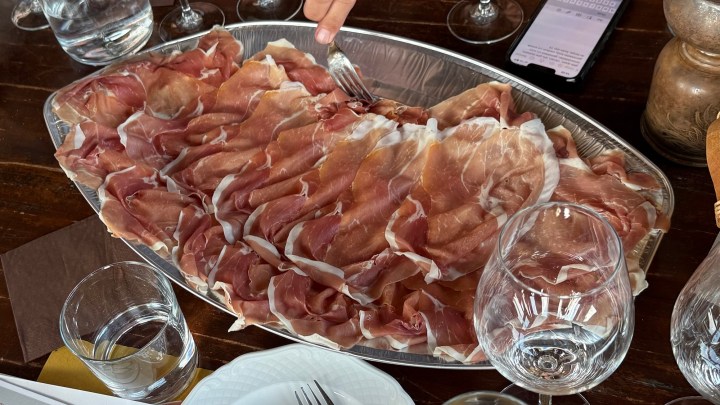
Another factor that is important for the terroir of Friuli Grave is the wind. The closeness of the Alps to the sea creates a constant sea breeze. This breeze is perfect to dry the famous prosciutto from San Daniele, but it also helps to dry the vines after the frequent rain showers in the area.

More than 80% of the wine from Friuli is white. In the 1960s it was still 60% Merlot, but the area is more suitable for whites and the demand for red wine (including Merlot) has descreased. This year the Merlot next to the Pitars winery was replaced with white varieties. In Friuli Grave DOC white wines are produced from Chardonnay, Friulano, Pinot Bianco, Pinot Grigio, Riesling, Sauvignon Blanc, Gewurztraminer, and Verduzzo Friulano. As well as reds from Cabernet Franc, Cabernet Sauvignon, Merlot, Pinot Nero, and Refosco dal Peduncolo Rosso. Friulano is the most famous grape variety of Friuli. It used to be called Tokai or Tokai Friulano until Hungary joined the European Union, when Hungary claimed the name Tokai because it has a geographical area with that name. The Italians learned from this and created the new Prosecco DOC in 2009, encompassing both Friuli and Veneto. The name Prosecco used to be linked to the grape variety called Prosecco, but now they started calling the grape variety Glera, and linked the name of the DOC to the town also called Prosecco in Friuli. Even though the classic area for producing Prosecco is around Valdobbiadene in Veneto (now for Prosecco with a DOCG). This decision caused enormous commercial success, because now 700 million of bottles of Prosecco are produced each year.
Pitars
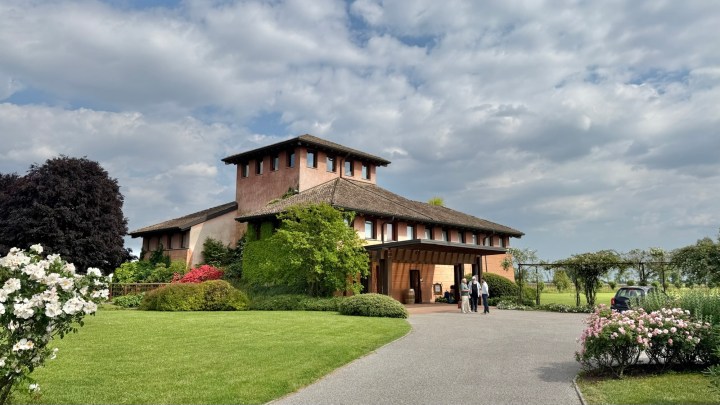
The first winery we visit in Friuli Grave is Pitars. This is a family business of Bruno Pitaro and has family. Pitars is the Friulan spelling of (the plural of) Pitaro. Pitas has 190 hectares (470 acres) of vineyards and produces 1 million bottles per year. The Pitaro family has lived in this area since the 1500s.
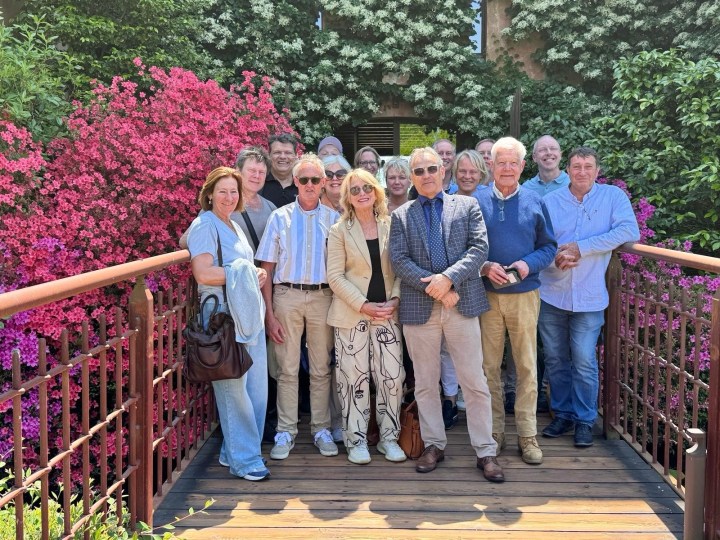
Bruno Pitaro is also the president of the Consorzio di Tutela Vini DOC Friuli Grave. He showed us around the winery.
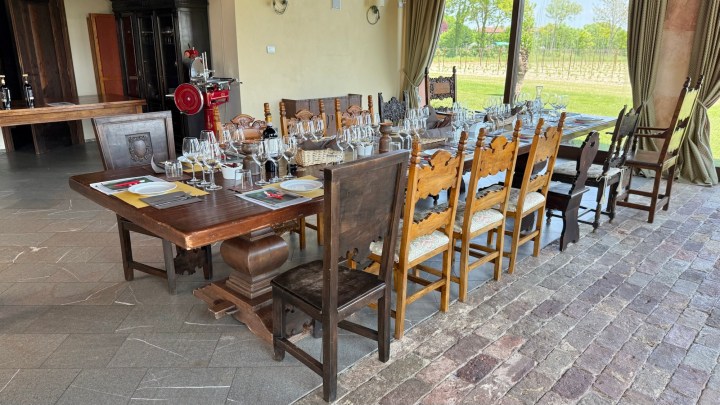
It was built using recycled materials from the area (including the chairs in the tasting room), to blend in with the environment. They do not use malolactic for white wines to keep the wines fresh, and restrict the use of sulfites.
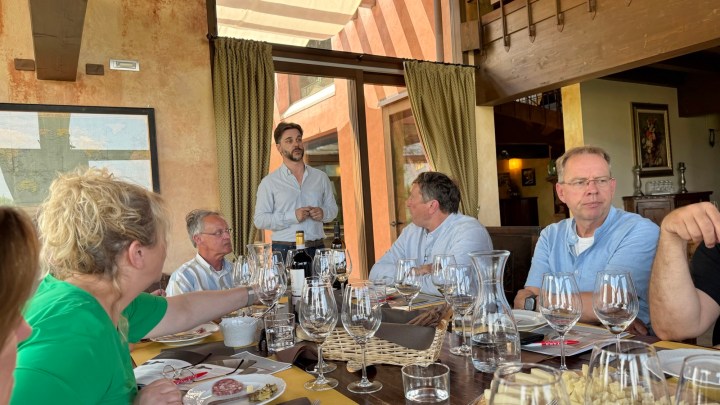
Nicola, son of Bruno, continued the presentation. He explained that the Pitars cultivate their own yeast together with a company from Navarra (Spain). This gives the wine their own character, rather than using commercial yeast that makes all wines taste the same.
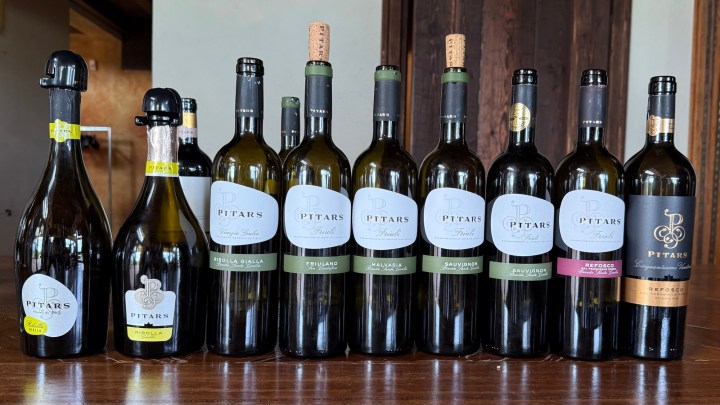
At Pitars we tasted the following wines:
- Ribolla Gialla Spumante Brut (charmat method for 6 months, 8 grams residual sugar): fresh and fruity, but more structure than a Prosecco
- Ribolla Gialla Spumante Extra Brut 2023 (charmat method for 9 months, 4 grams residual sugar): earthy, dry.
- Ribolla Gialla IGT Venezia Giulia 2024 (Ribolla Gialla DOC only allowed in Collio)
- Friuli Friulano DOC 2024: lightly aromatic, grass.
- Friuli Malvasia DOC 2024: more body and structure, white fruit, almond finish.
- Friuli Sauvignon Blanc DOC 2023: restrained nose and creamy for a SB.
- Friuli Sauvignon Blanc DOC 2024: classic SB aromas of green apple, grass, and grapefruit, crisp.
- Friuli Sauvignon Blanc DOC 2018: golden color, developed, mineral, oily, honey.
- Friuli Refosco DOC 2021 (with a machine only ripe berries are harvested without the stems, ganimede method for winemaking to extract color and tannins in a gentle way): fresh, soft tannins.
- Friuli Refosco DOC 2018 (harvested on October 26, much later than other vintages because usually it is required to harvest before it rains too much, 24 months American oak): very ripe fruit, complex.
Le Monde
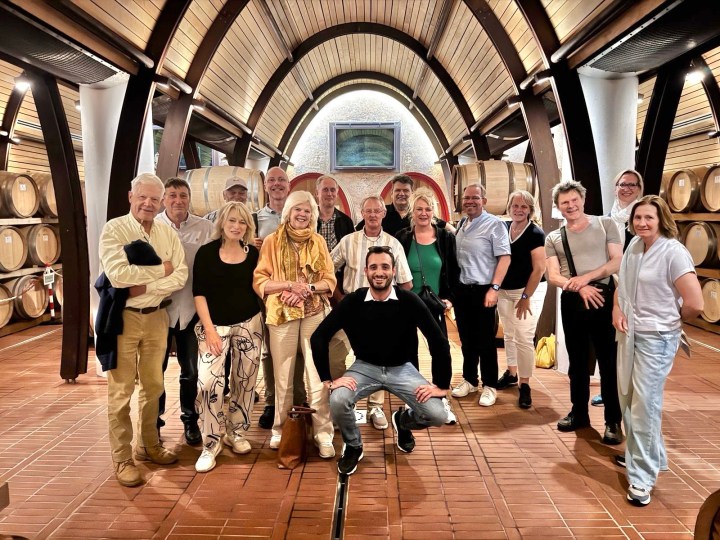
The Le Monde winery was founded in 1970, but the current owners acquired it in 2008. It is a family business that produces 800,000 bottles per year from 125 hectares (300 acres) of vineyards, 20 different labels. Giovanni Brumat showed us around and explained that the name sounds French but is not; Le Monde is the local name of the area. The soil here is clay and limestone. They do not use chemicals in the vineyard, but they are not certified organic because of the bureaucracy that would be involved.
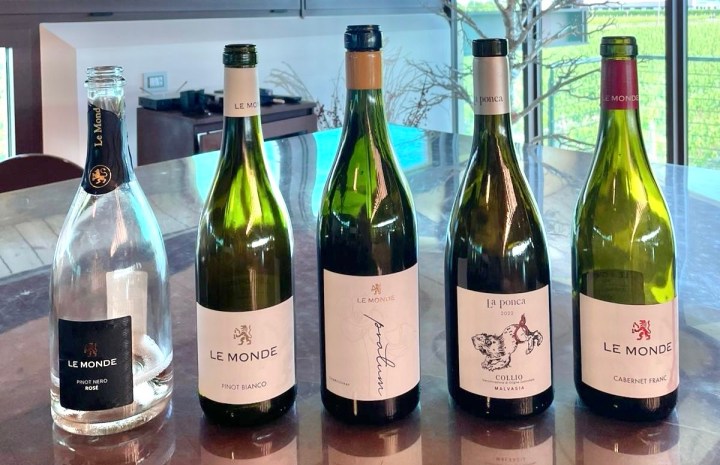
The wines we tasted at Le Monde were:
- Pinot Nero rosé spumante (charmat method for 4 months, 5 grams/litre residual sugar): light color, fruity, dry, soft mousse, nice finish.
- Friuli Pinot Bianco DOC 2024 (10% in oak, 90% stainless steel): touch of oak, pear, structure.
- Pratum Friuli Chardonnay DOC 2022 (not released yet, fermented part in oak and part in steel, then 1 year oak, followed by 1 year steel): oak not yet integrated (needs more time in the bottle), full-bodied but great freshness.
- La Ponca Collio Malvasia DOC 2022 (50% used oak, 50% steel): mineral, body, structure, salty, almond finish, fresh.
- Friuli Cabernet Franc DOC 2022: green bell pepper, fresh, soft tannins.
Ristorante Rosenbar
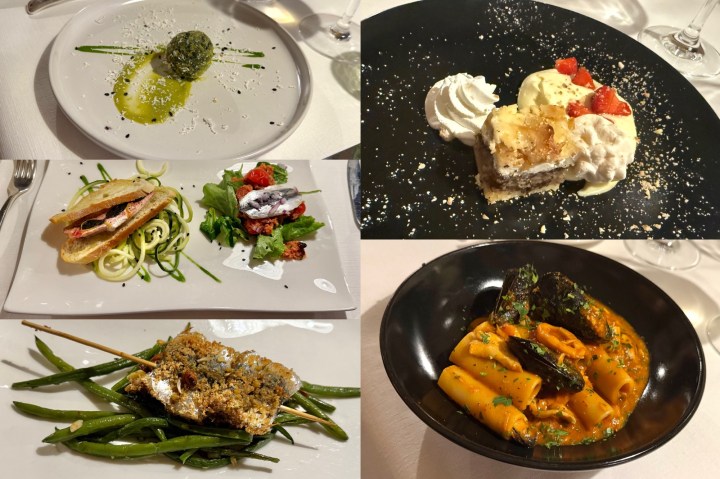
We ended the day with a dinner at Ristorante Rosenbar, where we enjoyed:
- Vegetable polpettine with cream of Montasio cheese and sclopit greens
- Red mullet sandwich with salad of zucchini and almonds
- Marinated anchovies with salad of tomato, olives, and capers
- Maccheroni pasta with ragù of mussels, calamari, and prawns
- Sardine skewer with green beans
- Gibanica (local dessert) with strawberries and cream
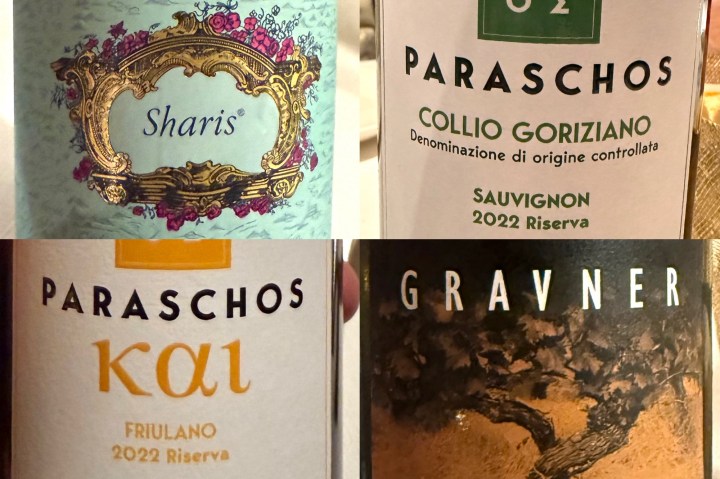
Of course there was wine as well. The Paraschos winery was kind of enough to let us taste their Sauvignon and Friulano. They were both natural wines, ‘but’ very nice. We also had Sharis by Livio Felluga, a blend of Chardonnay and Ribolla Gialla. And finally we had the Ribolla Gialla Venezia Giulia IGT 2016 by Gravner, a wonderful wine made with skin maceration, with great complexity and balance.


I love Friuli wines! What a great trip.
LikeLiked by 1 person
Thank you for another of your posts which will be kept in the ‘library’ and quietly perused for a learning experience. Know little about the wines, am looking at your photos of young vineyards and appreciating the sight of the food . . . both the fishy dinner and the lovely-looking prosciutto would have been enjoyed!
LikeLiked by 1 person
Non conosco bene i vini friulani e in verità non conosco bene nemmeno il Friuli. Pensate di passare da Milano?
LikeLike